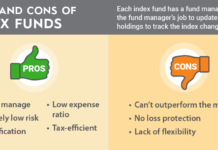Peer to peer lending is a system in which borrowers and lenders connect directly to lend money to each other. The internet has become a matchmaker between borrowers and investors or lenders who would like to co-invest in such loans with other investors. Co-investing taps into the power of the crowd where multiple investors invest into a loan each acquiring a slice of the interest and the risk.
There are several companies which act as intermediaries between the borrowers and the lenders. [LINKS] See more: P2p lenders in Uk, Europe, USA, Asia There are two types of online p2p lending websites; first p2p lending marketplaces and secondly p2p loan originators who directly engage with borrowers and lenders. P2P lending marketplaces group several loan originators under one roof or website.
See more: Beginners guide to p2p lending.
Why does peer to peer lending offer higher interest rates to investors?
Because p2p lenders are more efficient and effective at lending than traditional banks.
An economy cannot function without banking services (but it probably can without banks). A free market economy can function well when capital and entrepreneurs can interact in a symbiosis to create value.
The capital holders, lend money to borrowers in order to earn interest. This interest is the price of risk. Capital holders need to be compensated for the risk of losing their capital and interest when lending. Banks were the fulcrum between the lenders and borrowers, but this is changing. The internet has levelled the playing field. The financial technology industry (fintech) through the internet is benefiting from the same effects that created Uber and Airbnb. The middle man has become obsolete.
The way p2p lending enables higher interest rates is through technology which reduces costs and creates new opportunities. P2p lending companies are tapping into niche markets which were previously restricted to banks or to high net worth investors. Regulation has also opened up these markets.
What are the main differences between p2p lenders and traditional banks?
Traditional banks tend to have a large real estate footprint which ties up a lot of capital, on the other hand, p2p lenders can operate from small premises. Legacy cultures and systems of sourcing deals and evaluating credit have worked, but such systems require more resources to scale while p2p lenders can scale their system without incurring costs exponentially. P2P lenders can use white label ready to go software systems with pay as you go models, which reduces the cost, development time and the learning curve.
What are the key differences between a bank account and a p2p lending investment?
- Bank deposits are a form of saving money. P2P lending is a form of investment.
- Bank deposits are guaranteed by the Government while P2P lending is not.
- P2P lenders are not part of the fractional reserve banking system, while traditional banks are. What this means is that p2p lenders lending to borrowing ratio is 1:1. Traditional banks, on the other hand, can lend more money then they have funds deposited.
- P2P lenders allow investors to have a direct contractual relationship with the borrower. With a bank deposit, depositors are not involved in such relationships or risks.
- Bank deposits are subject to local laws for example reduced withdrawal rates in times of crisis. It is unclear how p2p investments will be regulated in such crisis. This has occurred in Greece and Cyprus.
See in more depth : How to choose a peer to peer investing platform?
What are the main advantages of peer to peer lending for investors and bank deposits?
- P2P lending interest rates vary between 5% and 14%. Higher interest rates can help maintain the purchasing power of one’s capital while a bank deposit interest rate tends not to keep up with inflation.
- Given the higher interest rates p2p lending can harness the power of compound interest much better than the lower interest rates being offered by banks.
- P2P lenders mitigate default risk through buyback guarantees, provision funds and asset-backed loans.
What are the main weaknesses of peer to peer lending for investors?
- P2P banking is not a bank account, investors can invest their funds, but there is no guarantee that those funds will be returned. P2P investing accounts are not covered by deposit guarantee schemes, only bank account deposits are.
- P2P investing is relatively new, and both the regulators and p2p management companies are climbing the learning curve.
- Most p2p lenders are concentrated in the USA, UK and the Baltic states. This exposes investors to geographical risk, currency risk, economic risk, and geo-political affairs risks in these geographical areas.
- P2P lending is as strong as the borrower’s ability to pay back the loan. This depends on many factors which the lender does not have full control over. These include regulations and economic and the business environment. The borrower does not have control over the competition and the lack of sellers for the products or property the investors
- In p2p investing there is a trend of interest rates going lower. An ever increasing army of p2p investors are absorbing all the demand from borrowers. It is a mistake for p2p investors to accept more risk they can handle just because the opportunities for yield become scarce.
- Loan to Value Ratios can change throughout the life of a loan. Car prices, house prices and art prices change because of market conditions. The market is determined by the demand for the products, the supply of alternative products and the regulatory regime which regulates aspects of supply and demand.
- Most P2P lenders (especially those with a buyback guarantee) have not been through a period of recession or major economic downturn.
- The illusion of a risk-free investment can bring complacency to investors.
In order to monitor the risks learn how to, monitor your peer to peer lending portfolio and follow interviews and reviews of p2p lenders
Conclusion
Peer to peer lending is like water and fire, they are an excellent servant but are a bad master. This new asset class is not the ultimate investment tool, but a tool in the investing tool set.
Like any new tool climbing the learning curve slowly and steadily is the key to success. Enjoy your p2p adventure!
P2P lending is just the start of changing finance as we know it … The Ubersation of money is well on it’s way.
The p2p fintech phenomena is just the beginning, money itself is in the process of being democratised. The Uberisation of money itself is already here, in the form of cryptocurrencies such as Bitcoin, Dash, Crown, deCRED and MUE. Stay tuned we are living in an interesting financial revolution!











